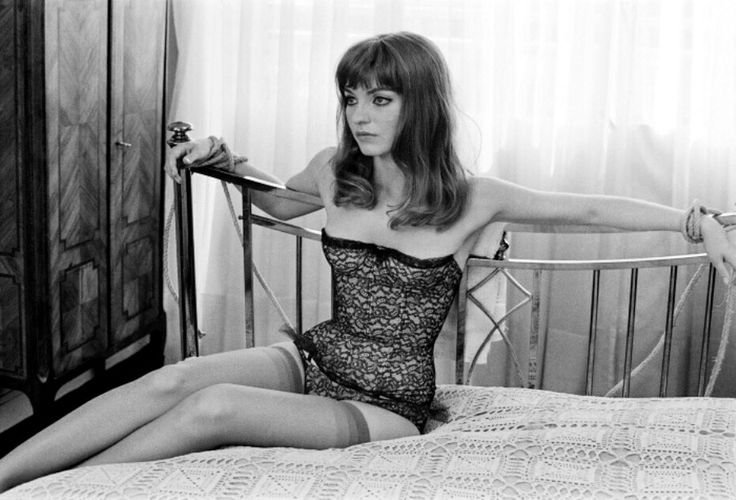
Alain Robbe-Grillet’s Trans-Europ-Express (1966) applies the filmmaker’s Nouveau roman formal experiments onto the crime film as a means of parodying the genre as well as the filmmaking process itself. Of Robbe-Grillet’s films Trans-Europ-Express is the most playful; as if Robbe-Grillet were directing a script by Luc Moullet. Trans-Europ-Express is formally experimental but it is Robbe-Grillet’s film that is most rooted in cinematic conventions rather than political ideologies.
The premise of Trans-Europ-Express is that Alain Robbe-Grillet (playing himself) boards the titular locomotive with a small entourage and, while en route to Belgium, conceives of a movie (Trans-Europ-Express). This movie will star (and does star) Jean-Louis Trintignant as Elias, a first time drug smuggler being tested by his outfit. The great Marie-France Pisier plays Eva, the double agent who has a very kinky affair with Elias.
The bulk of Trans-Europ-Express is the movie within the movie starring Trintignant and Pisier. The plot is in a constant state of flux as Robbe-Grillet (as himself in the movie) keeps changing his mind about the “who, what, why, where, and when” of the story. It’s a very clever mechanic that brings a lot of dry humor to the proceedings. The plot ricochets from one worn out cliché to the next with a manic reflexive energy. Suddenly the tropes that once made the crime films of Henri-Georges Clouzot and Jean-Pierre Melville seem the epitome of “cool” begin to look downright goofy.
Everything in Trans-Europ-Express is played straight which only further exaggerates the artificiality of the cinema. There’s a scene where Elias’ boss Franck (Charles Millot) outlines the procedures for the next drop-off of narcotics. Once Franck’s concluded his directions he double checks that Elias has understood by asking him “Say where?” to which Elias replies “Where”. It’s a wonderfully stupid sort of Martin and Lewis moment that totally subverts all of the “tough guy” posturing going on.
Later Elias is describing his adventures as a drug runner to a grocery boy (in a manner that mirrors Robbe-Grillet’s descriptions of Elias’ adventure) and a poster for From Russia With Love (1963) is visible in the background. This specific James Bond film is the subject of Robbe-Grillet’s satirical wit. The scenes in Trans-Europ-Express set on the train recall From Russia With Love though Jean-Louis Trintignant’s Elias is almost the anti-Bond as he secretly peruses his bondage magazine in his compartment.
But a film by Alain Robbe-Grillet isn’t a film by Alain Robbe-Grillet without some inventively shot and choreographed scenes of sex. Trans-Europ-Express has three such scenes, each taking its stylistic cues from the French New Wave. These scenes happen in rapid fire jump-cut shots of Elias’ face and Eva’s face, legs, breasts, and arms in a sort of visual jumble. The innuendo of the passing Trans-Europ-Express is hysterical and sets the tone for these scenes. Alain Robbe-Grillet is shooting his sex scenes like Jean-Luc Godard, though Robbe-Grillet’s pretensions are far more low brow; essentially Robbe-Grillet is mocking Godard’s prudish approach to sex.
Alain Robbe-Grillet’s films aren’t part of the “essential” canon of must-see movies. His greatest contribution to that group of films was his screenplay for L’Année dernière à Marienbad (1961). But his films are often formally interesting and delightfully kinky which should appeal to most viewers. Trans-Europ-Express is a great little movie and the perfect place to start with Alain Robbe-Grillet.
